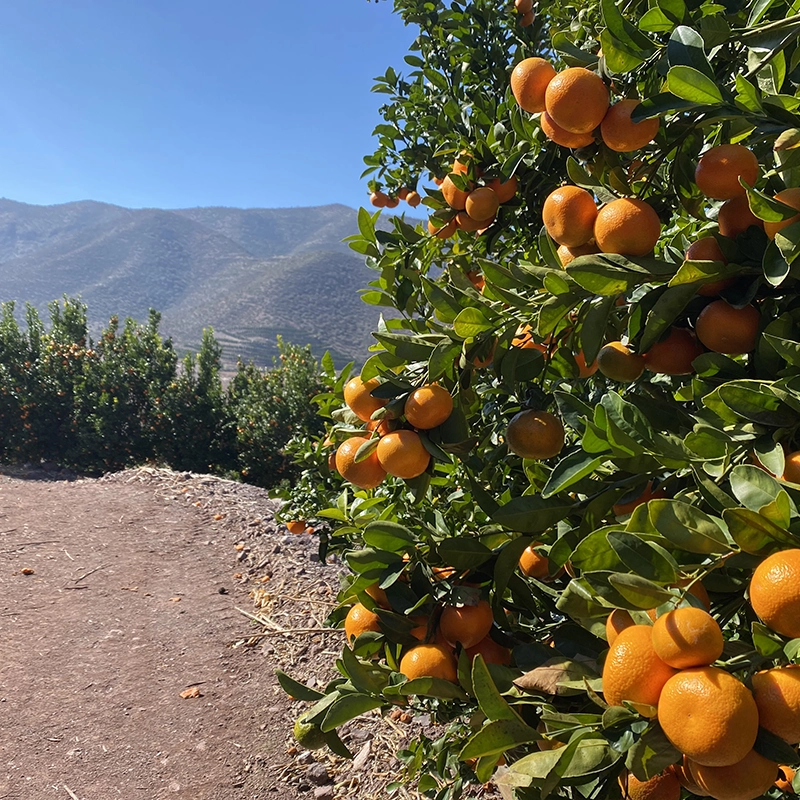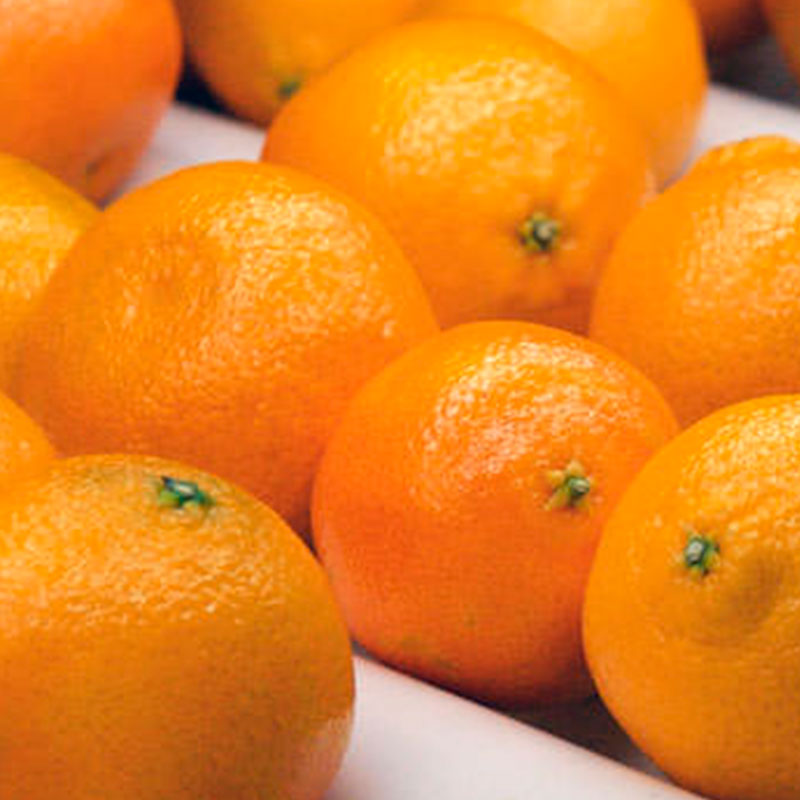
Chile’s climate is similar to the Mediterranean’s subtropical weather, with clearly differentiated seasons. This weather is ideal for an organized and predictably productive cycle of the trees, yielding high‑quality citrus.
Citrus crops require varying degrees of heat during the spring and summer, to allow for the proper development of the fruit through maturity. Citrus needs enough exposure to cold temperatures in the winter to support development and to attain its brilliant color.
In Chile, there are three, primary citrus‑producing regions. The earliest fruit is grown in the mountain valleys in the Coquimbo Region (Ovalle and Vicuña) where the first soft citrus are harvested in April, followed by the fruit of the countryside of Valparaiso and Metropolitan Regions the first week of May. Finally, for coastal fruit of the regions of Coquimbo, Valparaíso and O’Higgins, harvest can last until the beginning of October.
Clementines and mandarins: In 1995, Subsole invested in their clementine and tangerine programs, becoming one of the first Chilean exporters of these varieties. During these early years, Subsole’s primary markets were Japan and the U.K. In 2005, the U.S. was opened. The U.S.’s East and West Coasts currently represent over 90% of Subsole’s citrus exports.
Oranges: In 2005, Subsole started exporting oranges, concentrating on Japan and Spain. In 2007, Subsole added South Korea to their growing market base. Recognizing the Northern Hemisphere’s off‑season opportunity, Subsole was able to enter the international market with rapidly growing export volumes. In 2009, the U.S. market was opened, which presently represents 90% of Subsole’s orange exports.
